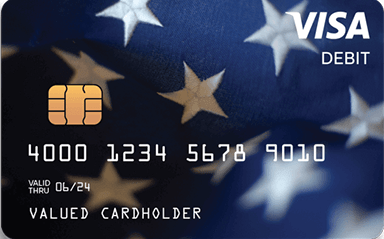The second Covid stimulus checks are here, but they’re not always checks. Here’s the critical information on payments sent by prepaid cards.
If you’re eligible for the second round of Coronavirus stimulus checks, you might have been one of the 8 million Americans whose check was actually a prepaid card.
Although the IRS and Treasury Department issued some prepaid cards for the first stimulus check back in May 2020, the number of prepaid cards has doubled for the second round. Called EIP Cards (Economic Impact Payment card), the IRS issued these prepaid cards to taxpayers for whom the IRS doesn’t have bank account information from their 2019 tax return. According to the IRS, the use of prepaid cards allowed the IRS and Treasury to get payments to taxpayers faster than using checks alone.
If you’re new to prepaid cards, you might have some questions about the EIP card. We’ll try to cover the most common questions here. If you have others, feel free to ask in a comment below.
Who’s Eligible for the Second Stimulus Check?
Unlike the CARES Act, not everyone qualifies for the second stimulus payment. Those reporting adjusted gross income of $75,000 or less on their 2019 tax return ($150,000 for couples filing jointly) will receive the maximum amount of $600 per individual plus $600 per dependent child under 17.
What is the EIP Card?
The EIP Card is a general-purpose prepaid card, which means that it carries the VISA brand and can be used for purchases and payments anywhere VISA is accepted. The money on the card isn’t associated with any bank account. So, it’s like VISA or Mastercard gift cards that you can buy in stores, with a couple of differences.
Who Gets the EIP Card?
Let’s start with the easy part. If you received your 2019 tax refund by direct deposit to your bank account or your existing prepaid card, you’ll get the second stimulus payment the same way.
If not, you’ll receive a check or the EIP prepaid card. What determines which one? Well, that’s unclear. But the IRS has stated that those who received checks for the first stimulus payment may get a prepaid card this time. Likewise, those who received a prepaid card for the CARES Act payment may get a check this time. What’s clear, though, is that you won’t receive your second stimulus payment on your original EIP Card if you received one for the first payment. They’re not reloadable.
Is the EIP Card Reloadable?
Still no. The EIP Card is kind of a one and done proposition. Once you spend the stimulus money on the card or transfer it to another account (see below), it’s done. That makes it more like those Visa gift cards.
How Do I Use the EIP Card?
First things first. You need to activate the card when you receive it–just like any credit or debit card. Until then, it won’t work.
To activate it, call (800) 240-8100 and set a 4-digit PIN. Once activated, you can use the EIP Card to make purchases in stores or online, just like you would any Visa credit or debit card.
How Do I Manage My EIP Card Account?
After activating the EIP Card, you can manage your account at EIPCard.com. You’ll need to register as a new user. After that, you can check the balance and see your transaction history. The EIP Card is managed by Money Network®, a company that primarily manages prepaid cards for businesses and government benefits. So, you can use the Money Network mobile app (available for Apple or Android devices) for the same functions as the EIPCard web portal.
Can I Use the EIP Card to Get Cash?
You bet. You can use the EIP Card at any Allpoint ATM without a fee. Allpoint ATMs are at many national retailers like Target, CVS, Walgreens, Kroger, Speedway, and others. To find locations in your area, you can use the EIP Card web portal or mobile app, or you can go directly to Allpoint’s site.
Are There Fees to Use It?
You can use the EIP card for purchases, get cash, and transfer money out with no fees at all.
But, there are a couple of fees to watch out for. First, if you use an ATM other than Allpoint, you may get charged by the ATM owner. That amount can vary from $2 – $4. Money Network also charges a fee of $2 for out-of-network ATM withdrawals, but it waives the fee for the first one each month.
You’ll also incur a fee to use an ATM to check your balance–$.25 per balance check. That’s easily avoided by checking your balance on the web portal or mobile app.
I Don’t Want This Thing. Can I Cash Out?
Sure. If you don’t want to use the card, you can just transfer the entire balance to your bank account or even your regular prepaid card. And there’s no fee to To do so. All you need is the routing and account number for your bank account.
If you’re transferring the balance to your regular prepaid card, it works just like a transfer from a bank account.
A transfer from the EIP Card to any other account is an ACH transfer, so it will take 2-3 days for the transferred funds to be available.

